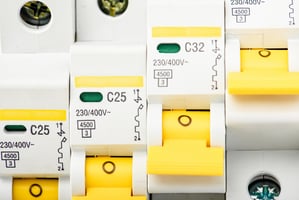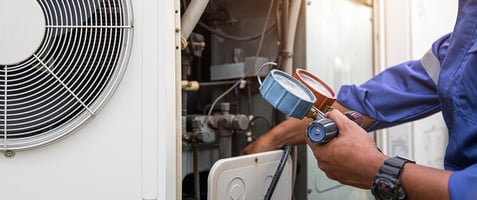Electrical safety might not be the most glamorous or exciting subject, but it's one that's vital...
GFCI and AFCI: How They Make Your Home Safer
 Electricity, as wonderful as it is, can be deadly. Direct contact between electrical power and a human being can cause great bodily harm and possibly death. But that’s not the only danger electricity poses. Some of the most deadly home fires are electrical fires. Here’s how GFCI (Ground Fault Circuit Interrupters) and AFCI (Arc Fault Circuit Interrupters) keep your home safe from both of these dangers.
Electricity, as wonderful as it is, can be deadly. Direct contact between electrical power and a human being can cause great bodily harm and possibly death. But that’s not the only danger electricity poses. Some of the most deadly home fires are electrical fires. Here’s how GFCI (Ground Fault Circuit Interrupters) and AFCI (Arc Fault Circuit Interrupters) keep your home safe from both of these dangers.
GFCI Protects Against Electrical Shock
If your home was built in the last 30 to 50 years, you probably are familiar with GFCI outlets. You will usually find them in bathrooms, kitchens, laundry rooms, exterior outlets, and anywhere water is likely to be used. They will automatically shut off the current to an outlet if the current going in and out becomes unbalanced. The primary safety function of a GFCI is to prevent electrical shock.
You may have encountered a triggered GFCI outlet. If you plug an electrical appliance, such as a hairdryer, into one of these outlets after it has shut off the current, the device won't work. The GFCI outlet has a reset button in the center. When an unbalanced current triggers a shutoff, the reset button pops out. The reset button will need to be pushed back in to restore the current to the outlet so it can be used.
AFCI Protects Against Electrical Fires
AFCI receptacles and breakers are usually found in homes built after the year 2000. AFCI receptacles are usually required for living areas such as bedrooms, living rooms, dining rooms, hallways, and similar areas. Most newer houses will have AFCI breakers in the electrical panel. AFCI breakers detect unusual electrical arcs in the current, which can cause heat. Heat, of course, can ignite a fire. An AFCI breaker keeps you safe by shutting off the current to a circuit where unusual and excessive electrical arcs occur. This dramatically decreases the chances of an electrical fire happening in your home.
Receptacles vs. Breakers
Both types of current interrupters can be purchased and installed as either receptacles or breakers. A breaker is installed in your electrical panel. It can include several receptacles on that one circuit, such as all the lights and outlets for your patio. If a breaker is tripped, everything connected to that circuit will lose power. To restore power, you will need to go to the electrical panel and reset the breaker. When individual receptacles are used, only the receptacle affected loses power, which you can reset directly instead of in the panel.
There are situations where one choice may be better than another. Installing receptacles is a much quicker and more straightforward option for most jobs. But if you need a lot of circuit interrupter receptacles in one area, having a breaker installed for the entire circuit might be a better choice. Of course, your local electrical code has the final say on where AFCI or GFCI receptacles are required.
Making Your Old Home Safer with Circuit Interrupters
Lots of homes were built before AFCI receptacles and breakers became the standard. Every year more homes are adding the protection of GFCI receptacles and breakers, but there are plenty out there that still need updating. If you are concerned about the safety of your home’s electrical system, it is best to contact a licensed electrician to do a full inspection. Only licensed professionals are qualified to advise you on what changes can and should be made to the wiring in your home.




